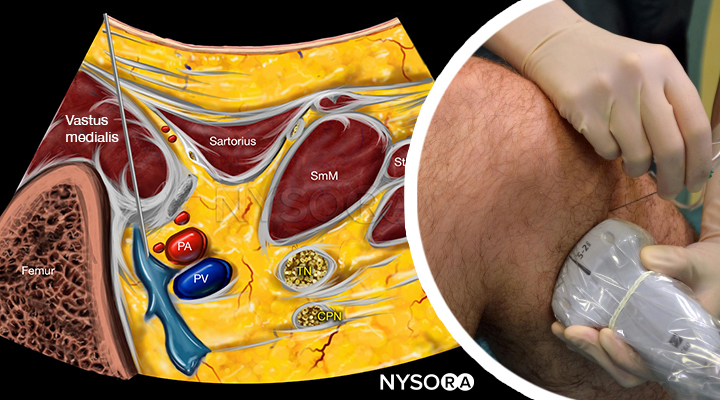
The study participants, outcome assessors/researchers, other anesthesia personnel, surgeons, physician assistants, and nurses will be blinded to the treatment arm.

Keywords: Total knee arthroplasty, Pain control, Adductor canal block.

Greg Hickman performs an ultrasound-guided iPACK block, injecting local anesthetic in the Interspace between the Popliteal Artery and the Capsule of the Knee to achieve posterior analgesia for ACL reconstruction. Only the regional anesthesiologist performing the block will know the randomization status. between the popliteal artery and capsule of the knee (iPACK) has become. Ultrasound-Guided iPACK Block In this new BLOCKJOCKS BLOCK OF THE DAY video Dr. Top of Page Study Description Study Design Arms and Interventions Outcome Measures Eligibility Criteria Contacts and Locations More Information
Why Should I Register and Submit Results?. Comparison of efficacy between the genicular nerve block and the popliteal artery and the capsule of the posterior knee (IPACK) block for total knee replacement surgery: A prospective randomized controlled study. The genicular block seems to be a promising technique that can offer improved pain management in the immediate and early postoperative period without adverse effects on systemic and motor variables.Ĭite this article as: Akesen S, Akesen B, Atıcı T, Gurbet A, Ermutlu C, Özyalçın A. About Press Copyright Contact us Creators Advertise Developers Terms Privacy Policy & Safety How YouTube works Test new features Press Copyright Contact us Creators. The length of hospital stay was significantly lower in the genicular block group compared to the IPACK and the control group (p<0.05 for both variables).Ĭonclusion: IPACK and genicular blocks both are effective in improving patient comfort during and after TKR surgery and reducing the potential need for systemic analgesic and opioids. The degree of flexion was significantly higher in the genicular block group at the postoperative 12h compared to the IPACK and the control group (p<0.001). The total consumption of morphine equivalents on the postoperative day 0 was significantly lower in the genicular block group (p<0.01, and p<0.001 for IPACK and control groups, respectively). The use of patient-controlled-analgesia (PCA) devices and button push count for analgesics demand were significantly lower in the genicular block group on the immediate postoperative period (p<0.01 at the postoperative 0 to 4 h). Peripheral nerve blocks have been integrated into most multimodal analgesia protocols for total knee arthroplasty (TKA). VAS score was significantly lower in the genicular block group at the postoperative 4h (5.5☐.55) and 8h (5.0☐.53) in the mobile state compared to the IPACK (8.0☐.47 and 8.0☐.43, respectively) and the control group (9.5☐.20 10☐.28, respectively) (p< 0.01). Results: Patients in the IPACK and genicular block groups had a significantly lower visual analogous scale (VAS) at postoperative 4 hours (p<0.01), 8h (p<0.01), 12h (p<0.01), and 24h (p<0.05). The visual analog scale (VAS) score, mobility, pre- and intra-operative monitorization of systolic and diastolic holding area, non-invasive blood pressure, heart rate, and SPO 2 were compared between the groups. All the patients underwent TKR under spinal anesthesia. IPACK block for pain control following anterior cruciate ligament repair or total knee arthroplasty Peripheral nerve blocks (continuous or single-injection) for the treatment of (i) acute pain, and (ii) for chronic pain only as part of an active component of a comprehensive pain. Methods: Sixty American Society of Anesthesiologists (ASA) physical status I-III patients were enrolled in this study and then were randomly assigned into three groups: the IPACK block group (17 female, 3 male mean age=67.5☑.4 years), genicular nerve block (16 female, 4 male mean age=68☑.76 years), and the control group (13 female, 7 male mean age=63☑.67years). 
Objective: The aim of this study was to compare the efficacy of popliteal artery and the capsule of the posterior knee (IPACK) block and genicular nerve block on postoperative pain scores, the need for rescue analgesics, range of motion (ROM), walking distance, and perioperative monitorization variables in patients undergoing total knee replacement (TKR) surgery.







 0 kommentar(er)
0 kommentar(er)
